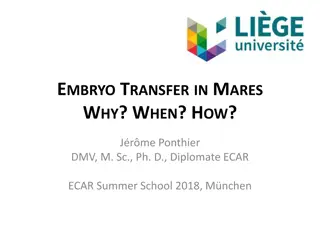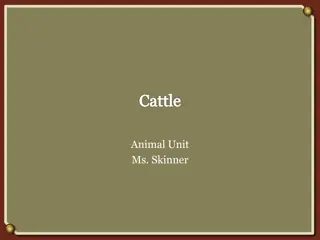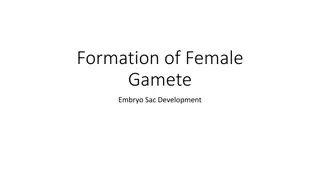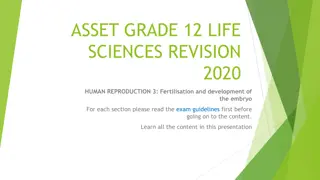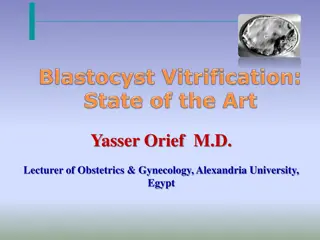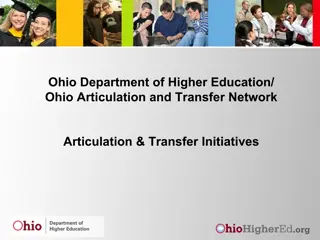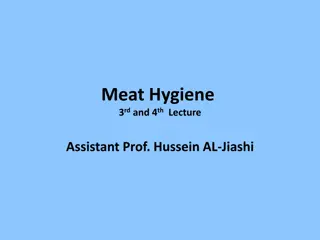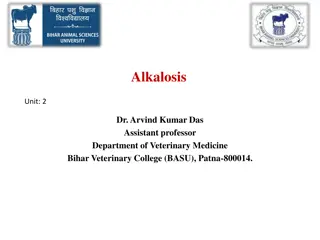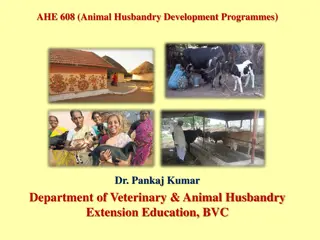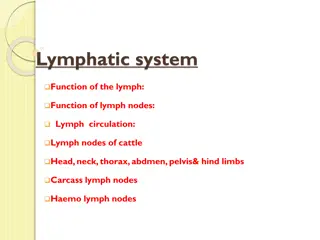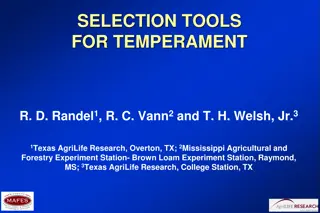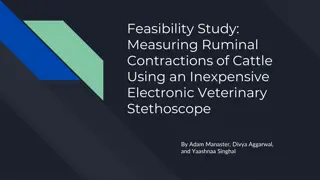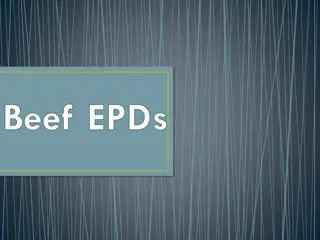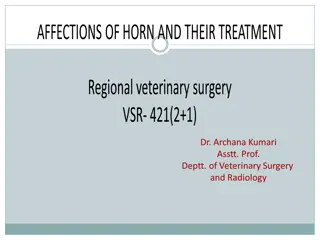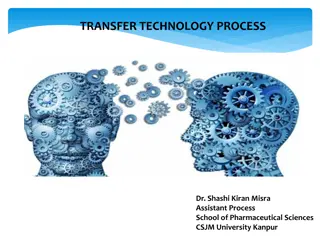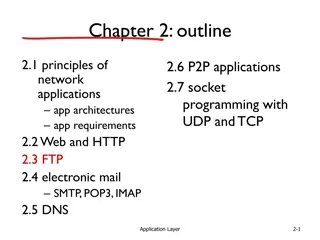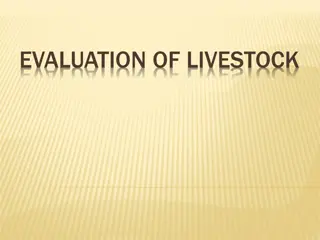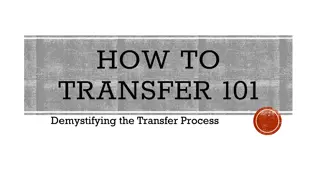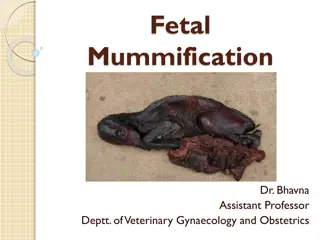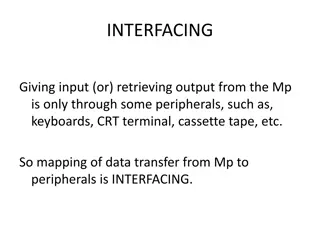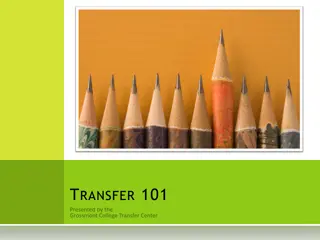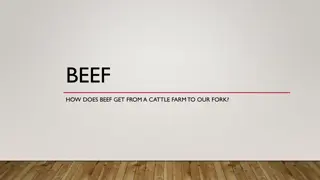Embryo Transfer in Cattle: Benefits, Process, and Considerations
Embryo transfer (ET) in cattle allows for the production of genetically superior offspring, increasing milk production and weaning weights. While offering advantages like rapid genetic improvement and flexibility in genetics transfer, ET also presents challenges such as increased costs and disease risks. The process involves selecting donor and recipient cows, synchronizing estrus cycles, superovulation, embryo collection, and transfer. Donor cow selection criteria include regular estrus cycles, high milk production, and good reproductive capacity. Recipient cows serve as surrogate mothers and must maintain pregnancies to term with adequate milk supply for the calves.
Download Presentation

Please find below an Image/Link to download the presentation.
The content on the website is provided AS IS for your information and personal use only. It may not be sold, licensed, or shared on other websites without obtaining consent from the author. Download presentation by click this link. If you encounter any issues during the download, it is possible that the publisher has removed the file from their server.
E N D
Presentation Transcript
EMBRYO TRANSFER (ET) Embryo transfer is the process by which an embryo is collected (flushing) from one female (the donor) and transferred to another female (the recipient) to complete the gestation period. The main goals for ET is obtain the maximum number of genetically superior embryos in a minimum amount of time
Benefits of embryo transfer: Cows produce only one calf per year, ET allows the production of many offspring within a year from a single cow ET can increase the genetic potential of a herd in a relatively short period of time. ET can increase milk production in dairy herds. ET can increase weaning weights in beef and dairy herds. ET allows other producers to take advantage of superior genetics because frozen embryos can be shipped almost anywhere and cross border. ET preserves superior genetics for future generations due to embryo freezing.
Disadvantages of ET Increased expenses and higher breakeven costs for calves Requires a higher level of management Increased potential for spread of certain diseases Not all potential donors respond positively to treatment
EMBRYO TRANSFER The main steps for embryo transfer: 1- Selection of donors 2- Selection of recipients 3- Estrus Synchronization of donor and recipient animals 4- Superovulation of donor animal 5- Artificial insemination of the donor animal 6- Embryos collection 7- Evaluation of embryos 8-Transfer of embryos to recipient animal
Basics of donor cow selection Regular estrus cycles High milk production Good body condition Maximum reproductive capacity No previous report of reproductive problems or repeat breeder No previous report of dystocia with normal postpartum history The transfer of the genetic characteristics of the donor cow is the main objective for ET
Basics of recipient cow selection Recipient cow serve as surrogate (foster) mothers to the calves, but not contribute with genetic information The genetic makeup of the recipient cow is not as important as the makeup of the donor cow The recipient cow must be able to maintain her pregnancy to term and produce an adequate milk supply for her calf.
THE PROCEDURES OF ET Estrus synchronization Once the donor and recipient cows have been selected, they must be synchronized so they are on the same phase of their estrus cycle It is important to synchronize estrus cycles because the reproductive environments of the donor and recipients must be identical in order for the embryo to survive the transfer Estrus synchronization programs we described previously
THE PROCEDURES OF ET Superovulation The donor cows introduce for superovulation programs for producing many follicles and oocytes instead of one oocytes Superovulation programs we described previously
THE PROCEDURES OF ET Breeding the Donor Cow When the donor shows signs of estrus, directly inseminate naturally or artificially Two inseminations are required and are performed 12 hours apart Use high quality semen It is important to evaluate the semen before insemination In the case of natural insemination, it is necessary to use males known to have high fertility
THE PROCEDURES OF ET The Flush: Once the donor cow has been bred, the embryos are allowed to grow for six days During this time the embryos travels down the reproductive tract from the oviduct to the uterus where they can be flushed out On the seventh day, the embryos are ready to be removed, this process is called flushing Two methods for flushing, either surgical method or non-surgical method
THE PROCEDURES OF ET The Flush: Non-surgical method: as following: 1-An injection of lidocaine is given prior to the flush to reduce pressure and stress on the donor cow and to make the flush easier 2-To begin the flush, a Foley s catheter is passed through the cervix into one uterine horn. 3-The Foley s catheter contains a balloon that is inflated inside the uterine horn to prevent the flushing fluid (phosphate buffered saline) and embryos from escaping through the cervix
THE PROCEDURES OF ET The Flush: Non-surgical method 4-After that the uterine horn filled with flush media and massaged to allow the embryos to flow out of the tract 5- This process is repeated several times in each uterine horn to ensure removing all the embryos from the uterus 6- Embryos are carried out of the reproductive tract through plastic tubes and collected in a filter with the flush media.
THE PROCEDURES OF ET The Flush: Non-surgical method 7-In the lab, embryos are separated from the flush media and examined under a microscope to determine their quality and stage of development 8-Only good quality and undamaged embryos should be transferred to the surrogate mother
THE PROCEDURES OF ET The Flush: surgical method The surgical method most often used in sheep, goats, and pigs Exposing the reproductive tract by a mid-ventral incision under general anesthesia. Injection of flushing media directly for reproductive system Three methods for collection embryos (A)Flushing oviduct toward fimbriae (B) Flushing oviduct toward utero-tubal junction (C) Flushing uterus toward base of the uterine horn
THE PROCEDURES OF ET Transferring the Embryos Each embryo which collected put into a small, plastic straw and then loaded into an embryo transfer gun The embryo is then inserted through vagina into either the left or right uterine horn of recipient cow depending on which ovary has a corpus luteum Or the insertion of embryo can be done by laparoscope After that the donor cow should be injected with prostaglandin to prevent pregnancy if you missed embryos after flushing as well as antibiotic to prevent any infection which may be happened after flushing


